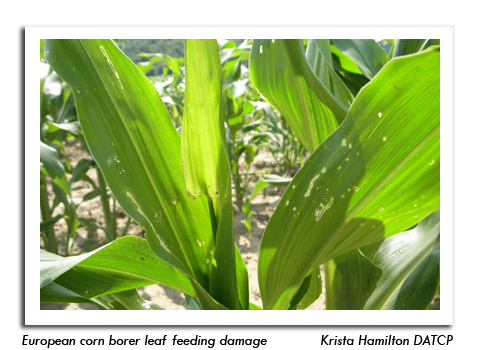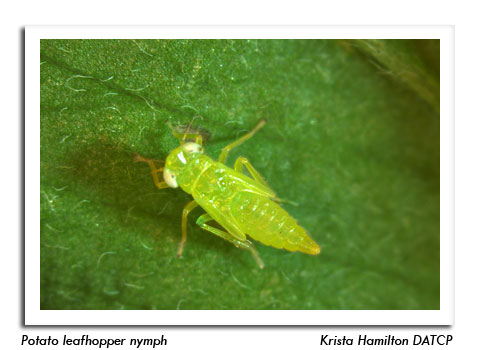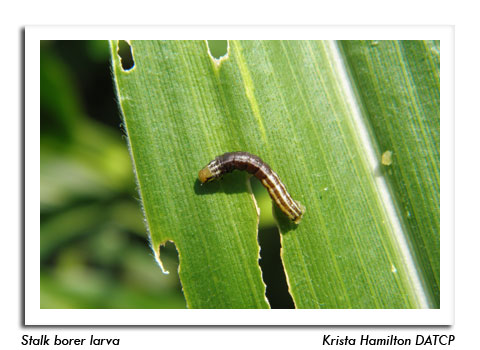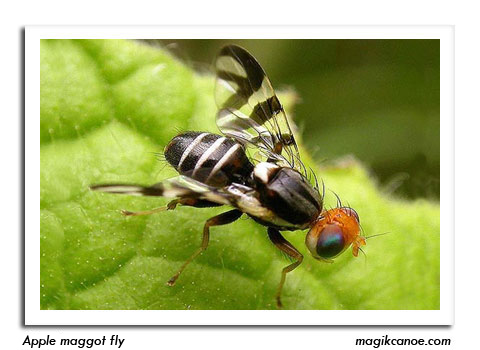
 |
|
|
Looking Ahead
Volume 58 Number 8 Date 06/20/2013 EUROPEAN CORN BORER - The tallest corn is now susceptible to infestation by first generation larvae. Early signs of feeding such as pin holes and shot holes in the whorl leaves should be evident in non-Bt hybrids next week. POTATO LEAFHOPPER - Nymphs are appearing in alfalfa. Counts of this stage and the adults remain below the economic threshold of 1.0 per sweep in 8- to 11-inch fields, but reproduction could surge in response to the hot weather predicted for next week and systematic sampling of alfalfa regrowth is advised. STALK BORER - Minor injury was noted in Buffalo, Jackson, Richland and Trempealeau counties where 1-4% of corn plants in the peripheral rows were damaged. Leaf feeding is expected to become pronounced by early July as more larvae migrate from weed hosts to corn. Spot treatment may be justified for infestations affecting 10% of plants. APPLE MAGGOT - Emergence of flies from the soil could begin by June 22 near Janesville, June 25 near Madison, and July 3 near Eau Claire. This annual event corresponds with the accumulation of 900 degree days (base 50°F) when soil moisture is adequate. Traps should be placed next week in perimeter trees adjacent to abandoned orchards or woodlots to capture the earliest flies. TRUE ARMYWORM - Surveys indicate populations remain below economically significant levels, but continued scouting for localized infestations is recommended. Many cornfields have an abundance of weeds favorable for armyworm problems and late herbicide treatments at these sites may force the larvae from grasses onto corn plants. WESTERN BEAN CUTWORM - A single, very early moth was registered in the Janesville pheromone trap on June 15. Counts in 33 other traps were negative. The start of the annual flight is anticipated in 1-2 weeks. EASTERN TENT CATERPILLAR - Pupation has begun and the first adults may begin collecting in black light traps and at lights in the next two weeks, following the accumulation of 725 degree days (base 50°F). -- Krista Hamilton, DATCP Entomologist 





|
|
|